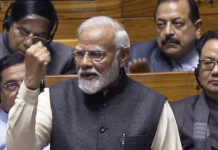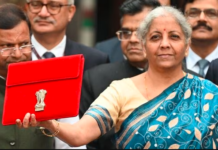India’s Most Precious Koh-i-noor Heera – The tryst with the Koh-i-noor or Kohinoor Diamond is a story in itself!
Diamonds, for centuries, have fascinated the mortals. It is one of the most precious & sought-after gemstones in the World. Some of the earliest references of this beautiful gemstone can be traced to India. It symbolizes love, beauty, rarity and strength in such modest ways.
One diamond that has enthralled rls Indians for ages has been the mesmerizing Kohinoor diamond. The Koh-i-noor, which means ‘Mountain of Light’ in Urdu, was first recorded in 1306. A Hindu text at the time said: ‘Only God or woman can wear it with impunity‘.
Its beauty has found mentions in various ancient Indian scripts, and so has its ownership. Recently, British MP Keith Vaz has stirred the age long discussion of India’s demand for ownership to the Kohinoor. He said,
“PM Modi is due to arrive in the UK in November and Prime Minister Cameron has gone out of his way to maintain a strong bilateral relationship. What a wonderful moment it would be, if when PM Modi finishes his visit, he returns to India with the promise of the diamond’s return.”
We bring to you 5 reasons why we think that the Kohinoor belongs back home in India and why we must fight for it.
- Kohinoor is Indian: While the country of origin of the great Kohinoor is India,
 the exact origin place of the diamond is not known. Most believe that the Koh-i-Noor or Kohinoor was mined in medieval times in in Andhra Pradesh’s Guntur district. It was originally 793 carats when uncut. At one time, it was considered the largest diamond in the world. In its first form, it is believed that it adorned deity of a Hindu Goddess during the reign of Kakatiya dynasty. Shah Jahan had the stone placed into his ornate Peacock Throne. Following the invasion of Nadir Shah, the Turkic ruler of Afsharid Persia in 1739, along with the Peacock Throne, he also carried off the Kohinoor to Persia. This brings to our first point – mined in India, belongs to India. Right?
the exact origin place of the diamond is not known. Most believe that the Koh-i-Noor or Kohinoor was mined in medieval times in in Andhra Pradesh’s Guntur district. It was originally 793 carats when uncut. At one time, it was considered the largest diamond in the world. In its first form, it is believed that it adorned deity of a Hindu Goddess during the reign of Kakatiya dynasty. Shah Jahan had the stone placed into his ornate Peacock Throne. Following the invasion of Nadir Shah, the Turkic ruler of Afsharid Persia in 1739, along with the Peacock Throne, he also carried off the Kohinoor to Persia. This brings to our first point – mined in India, belongs to India. Right?  Economic value: The valuation of the Kohinoor is given in the legend that one of Nader Shah’s consorts supposedly said, “If a strong man should take five stones, and throw one north, one south, one east, and one west, and the last straight up into the air, and the space between filled with gold and gems, that would equal the value of the Kohnoor.” Although the Kohinoor is not the biggest diamond in the world, its dreamy history and the fact that it was used by some of the world’s most imposing historical figures makes it priceless. And while us Indians have loved and conserved our heritage, the addition of Kohinoor will be like a diamond on the crown (quite literally!)
Economic value: The valuation of the Kohinoor is given in the legend that one of Nader Shah’s consorts supposedly said, “If a strong man should take five stones, and throw one north, one south, one east, and one west, and the last straight up into the air, and the space between filled with gold and gems, that would equal the value of the Kohnoor.” Although the Kohinoor is not the biggest diamond in the world, its dreamy history and the fact that it was used by some of the world’s most imposing historical figures makes it priceless. And while us Indians have loved and conserved our heritage, the addition of Kohinoor will be like a diamond on the crown (quite literally!) Historic Value: While the Kohinoor is really priceless, what makes it more valuable is the fact that it associates and symbolizes a very significant part of India’s history. It is a cherished gemstone that finds mentions in various scripts. It is also believed that the Kohinoor diamond was first mentioned more than 5000 years ago in a Sanskrit script, where it was called the Syamantaka. The Mughal ruler Babur mentions the diamond in his writings, Baburmama. A descendant of Ahmad Shah, Shah Shuja Durrani brought the Kohinoor back to India in 1813 and gave it to Ranjit Singh (the founder of the Sikh Empire). In 1849, after the conquest of the Punjab by the British forces, the properties of the Sikh Empire were confiscated. We understand that possession of a jewel (or non-possession of it) can never be a replacement for the sense of pride an Indian feels after truly knowing India’s rich cultural heritage. An artifact reaches a higher aesthetic level only in true archaeological setting, the diamond is a precious aspect of various chapters of Indian history and that’s where it should be – in India!
Historic Value: While the Kohinoor is really priceless, what makes it more valuable is the fact that it associates and symbolizes a very significant part of India’s history. It is a cherished gemstone that finds mentions in various scripts. It is also believed that the Kohinoor diamond was first mentioned more than 5000 years ago in a Sanskrit script, where it was called the Syamantaka. The Mughal ruler Babur mentions the diamond in his writings, Baburmama. A descendant of Ahmad Shah, Shah Shuja Durrani brought the Kohinoor back to India in 1813 and gave it to Ranjit Singh (the founder of the Sikh Empire). In 1849, after the conquest of the Punjab by the British forces, the properties of the Sikh Empire were confiscated. We understand that possession of a jewel (or non-possession of it) can never be a replacement for the sense of pride an Indian feels after truly knowing India’s rich cultural heritage. An artifact reaches a higher aesthetic level only in true archaeological setting, the diamond is a precious aspect of various chapters of Indian history and that’s where it should be – in India! Pride and Prejudice: I often wonder, if the British could, they’d also take the Taj Mahal and place it right next to the Buckingham Palace. Rulers tussled over the Kohinoor for centuries before Britain took it as part of the Treaty of Lahore, when it took control of the Punjab, in 1849. The jewel was seized by the Empire’s East India Company as one of the spoils of war and presented to Queen Victoria in 1850. In 1853, the Kohinoor diamond was mounted on a magnificent tiara for the Queen, which contained more than two thousand diamonds. Five years later, Queen Victoria ordered a new regal circlet for the diamond. In 1911, Garrards made a new crown that Queen Mary wore for the coronation – it contained diamonds, among them the Kohinoor. In 1937, this was transferred to the crown made for Queen Elizabeththe Queen Mother, based on Queen Victoria’s regal circlet and is set in a Maltese cross at the front of the crown. It is quite sardonic that a valuable gem of India now sits on the throne of the country that invaded us; consequently affecting our country’s share of the global economy from 24% to 4%.
Pride and Prejudice: I often wonder, if the British could, they’d also take the Taj Mahal and place it right next to the Buckingham Palace. Rulers tussled over the Kohinoor for centuries before Britain took it as part of the Treaty of Lahore, when it took control of the Punjab, in 1849. The jewel was seized by the Empire’s East India Company as one of the spoils of war and presented to Queen Victoria in 1850. In 1853, the Kohinoor diamond was mounted on a magnificent tiara for the Queen, which contained more than two thousand diamonds. Five years later, Queen Victoria ordered a new regal circlet for the diamond. In 1911, Garrards made a new crown that Queen Mary wore for the coronation – it contained diamonds, among them the Kohinoor. In 1937, this was transferred to the crown made for Queen Elizabeththe Queen Mother, based on Queen Victoria’s regal circlet and is set in a Maltese cross at the front of the crown. It is quite sardonic that a valuable gem of India now sits on the throne of the country that invaded us; consequently affecting our country’s share of the global economy from 24% to 4%. Reparations: I do not believe that the British could amend the loss it caused to our Country. But like Mr. Shashi Tharoor stated in his recent speech, reparations should not be considered as a “tool to empower” somebody, but rather as a tool through which the British can “atone” for the sins of the past. Well, British atonement has been long due and now is the best time as any!
Reparations: I do not believe that the British could amend the loss it caused to our Country. But like Mr. Shashi Tharoor stated in his recent speech, reparations should not be considered as a “tool to empower” somebody, but rather as a tool through which the British can “atone” for the sins of the past. Well, British atonement has been long due and now is the best time as any!













